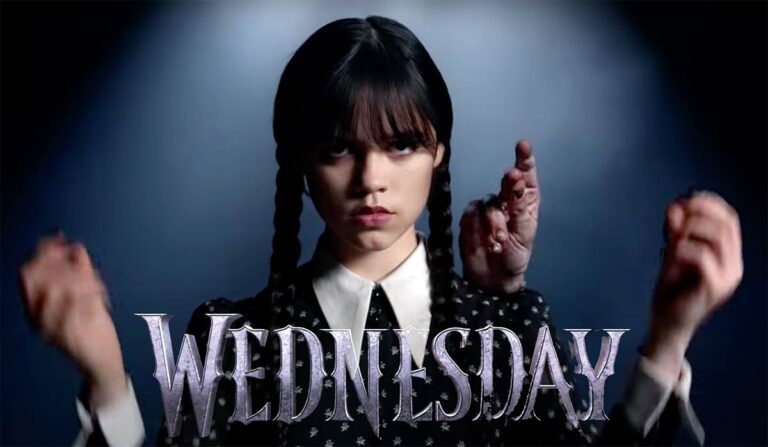Let’s be honest: television isn’t just background noise anymore — it’s the cultural soundtrack to our lives. It makes us gasp, weep, rage-tweet, and occasionally roll our eyes, all in the span of an hour. Over the years, a few audacious episodes have punched through the small screen and rewired pop culture. Some did it with shocking plot twists. Others broke rules or kicked open doors that had been locked since TV’s awkward black-and-white adolescence. So, let’s count down the seismic TV moments — the why-didn’t-I-see-that-coming shocks, the water-cooler legends, the episodes that everyone, absolutely everyone, seems to know. Yes, even your cousin who “doesn’t watch TV” has heard of these.
MAS*H: “Goodbye, Farewell and Amen” – The Night the World Stopped
First up, let’s take a trip back to February 28, 1983. Ronald Reagan sat in the White House. The world rocked out to Michael Jackson’s “Billie Jean.” And almost 106 million Americans tuned into the tear-stained goodbye of Hawkeye Pierce and company. “Goodbye, Farewell and Amen” wasn’t just another finale — it still holds the title for most-watched TV episode in U.S. history, with a whopping 105.97 million viewers (yes, you read that right!) crowding around TVs everywhere.
But it’s not just about numbers. This episode stitched together all the dark absurdity of war, blending slapstick jokes with gut-punch tragedy. The 4077th packed up their tents, the cast sobbed real tears, and so did millions at home. Fans still swap stories of watching it live. Even in this streaming-fueled age, nothing has topped the scale — no dragons, no zombies, not even a Super Bowl halftime show. MAS*H proved TV could say goodbye with grace and gravity. That’s an achievement everyone still honors.
Game of Thrones: The Red Wedding – “The Rains of Castamere” and the Bloodbath Heard ‘Round the World
Now, let’s talk chaos. It was June 2, 2013, and millions thought they knew the Game of Thrones playbook. Sure, characters died, but not those characters, right? Enter The Red Wedding: the most un-inviting “I do” in all TV history. Multiple key characters — Robb, Catelyn, Robb’s poor pregnant wife — slaughtered with chilling, orchestral brutality.
This wasn’t just a plot twist. It was a cultural detonation:
- Social media lost its collective mind. Twitter trended “#RedWedding” for days.
- Reaction videos flooded YouTube — people filmed themselves and their friends screaming or sinking to their knees in disbelief.
- Every critic and casual viewer started to believe: no character was safe, and nothing was off the table.
It fundamentally changed TV’s rulebook. Suddenly, every show got a little more unpredictable and a whole lot braver with its main cast. Better keep those fan-favorite contract negotiations tight!
Breaking Bad: “Ozymandias” – The Moment TV Chemistry Exploded
You really thought you’d seen intensity before? “Ozymandias” aired September 15, 2013. Most people weren’t ready for this. The penultimate Breaking Bad episode swung a sledgehammer at the entire narrative. Walter White’s empire collapsed in slow, inevitable motion, turning pride to ruin — just like the Shelley poem the episode borrowed its name from.
So, what happened here?
- Major characters made their exit (no spoilers, but you know who you are).
- Walt’s carefully constructed lies came apart in devastating fashion.
- Viewers everywhere reported pacing their living rooms in sweaty anxiety.
Why does it matter? Critics stacked up the praise. IMDb still awards it a rare perfect 10/10. Showrunners everywhere realized TV could be both artful and relentlessly tense, all in one go. These days, when a prestige drama aims to “go Ozymandias,” you know something monumental’s coming.
Ellen: “The Puppy Episode” – When Coming Out Was National News
We can’t leave out “The Puppy Episode” of Ellen. April 30, 1997, brought a seismic shift for TV. Ellen DeGeneres’s character — played by, obviously, Ellen DeGeneres — comes out as gay in the middle of a crowded airport. The Metaphor Hammer was strong, but wow, so was the bravery.
Why was this one so influential?
- “The Puppy Episode” wasn’t just Ellen’s character coming out, but also Ellen herself: rare before the era of personal social media confessionals.
- The episode drew over 42 million eyes, according to Nielsen.
- It triggered massive media buzz, drew both support and protest, and forced major conversations about LGBTQ+ life into America’s living rooms.
That moment let other LGBTQ+ shows step out of the closet, from Will & Grace to Pose. Love it or hate it, this episode changed TV forever.
Dallas: “Who Shot J.R.?” – The Cliffhanger that Held the World Hostage
Take a jump back to November 21, 1980. Soap operas didn’t just drip melodrama — they poured it, and nobody poured it thicker than Dallas. All spring and summer, Americans fretted: “Who shot J.R. Ewing?” The season three finale left everyone hanging with a bang — literally.
By the time the answer finally aired, everyone had a theory. Even Queen Elizabeth reportedly tuned in. Spoiler alert: it was Kristin Shepard, J.R.’s scheming sister-in-law and mistress.
This episode matters because:
- It invented the global cliffhanger obsession.
- Over 350 million people worldwide tuned in to watch the reveal.
- “Who shot J.R.?” became the go-to template for endless “whodunit” storylines across soap operas and beyond.
You want a TV twist that owns the headlines for months? You chase Dallas.
Survivor: “The Final Four” – Reality TV Finds Its Ruthless Roots
Here’s a genre-jump for you. On August 23, 2000, everyone first realized: Reality TV meant real money, real votes, and real betrayal. Survivor’s first season reached its epic conclusion as Richard Hatch outwitted, outplayed, and outlasted his way to a million-dollar check.
What made this episode so sticky?
- It made “reality competition” the engine driving U.S. television for years to come.
- It spawned countless imitators — from American Idol to Big Brother — that still take up precious living room real estate.
- It taught viewers that strategy, alliances, and, sometimes, snake-like deceit all equalled ratings gold.
Thanks, Survivor. Without you, Jeff Probst’s blue shirts would be a distant dream.
Seinfeld: “The Soup Nazi” – The One-Liner That Launched a Thousand T-Shirts
Get ready to shout it: “NO SOUP FOR YOU!” The Soup Nazi episode, aired November 2, 1995, is now forever a pop-culture meme. Seinfeld always specialized in catchphrase episodes, but this one took kitchen-based customer service to legendary heights.
Why’s it on the list?
- The Soup Nazi character became a pop icon overnight.
- Fans still quote him nearly thirty years later, often to confused waiters.
- It proved that sitcoms could etch themselves into culture with nothing but a sharp script and an unforgettable character cameo.
So, if you ever hear someone bark orders at a deli, just nod knowingly.
Mad Men: “The Suitcase” – Character Drama at Its Finest
Step into Sterling Cooper with “The Suitcase,” aired September 5, 2010. Don Draper and Peggy Olson spent one long, soul-baring night together — no smoke, no mirrors, just raw honesty. Critics adored it. Even casual fans felt the emotional wallop.
What makes it so influential?
- It’s considered the best episode of a series stuffed with them.
- It showed that dialogue-heavy, slower-paced storytelling can light up water cooler talk.
- It inspired a new breed of workplace drama that tries (often in vain) to bottle Mad Men’s chemistry.
If you want to see acting and writing sparring like Ali vs. Frazier, just queue this one up.
ER: “Love’s Labor Lost” – Medicine Meets Melodrama, and Nobody’s Dry-Eyed
Now, let’s stick with drama — only this time, it’s in the ER. (Where else?) The “Love’s Labor Lost” episode aired March 9, 1995. Dr. Greene fought desperately to save both a mother and child. Spoiler alert: Not everyone makes it.
The legacy?
- The episode bagged five Emmys, including Outstanding Drama Series.
- Its depiction of hospital chaos and heartbreak raised the stakes for the entire medical drama genre.
- It created a template for every emotionally charged hospital episode to follow.
Grey’s Anatomy fans, you know who you are. Give your due to ER.
Roots: “Part I” – History Grabs the Remote
Back in January 1977, TV audiences sat riveted. Roots debuted Kunta Kinte’s story. Millions watched as historical truths hit like sledgehammers. The show didn’t flinch from horror, pain, or the reality of slavery. It changed TV’s mission from entertainment to essential education.
The impact?
- Over 100 million viewers saw some or all of Roots.
- It got everyone — from teachers to politicians — talking about America’s unresolved history.
- Later shows tackling important issues owe Roots their existence, plain and simple.
It’s a miniseries moment nobody dared ignore, and it’s still required viewing.
Still Feeling Those Aftershocks
Here’s what links every episode on this list: none played it safe. Instead, they poked at comfort zones, challenged expectations, and carved new pathways for TV storytelling. Today’s streaming hits walk trails blazed by the blood, sweat, tears, and laughter of their predecessors. So next time you hear the words “game changer,” remember — these episodes aren’t just part of TV history. They’re the tectonic shifts that built everything binge-worthy today.
And honestly, isn’t that what keeps us coming back to the couch, popcorn in hand, ready for the next big jolt?





